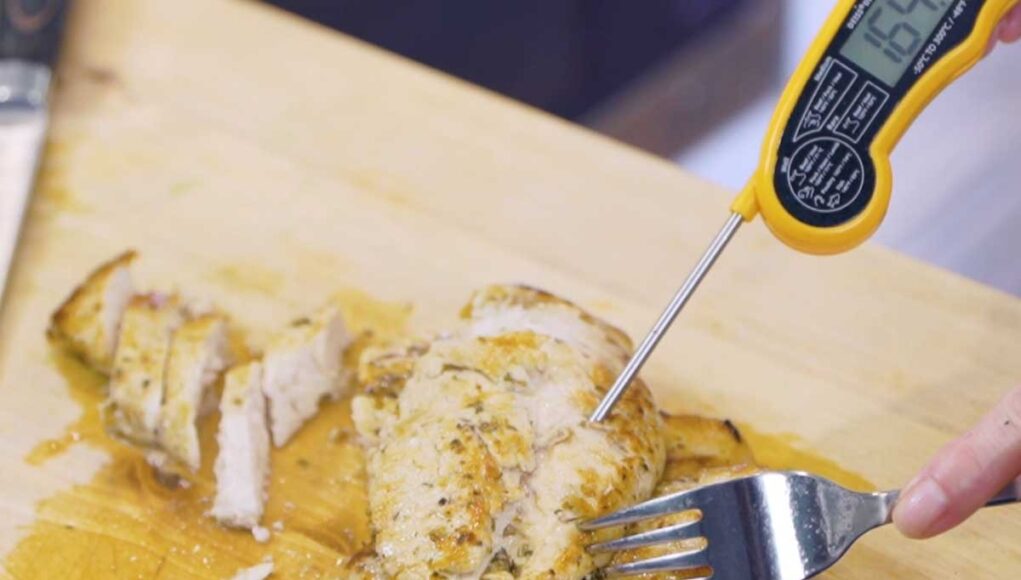Ensuring your meat thermometer is accurate is essential for safe and delicious cooking. In this detailed guide, we provide step-by-step instructions on how to calibrate a meat thermometer with boiling water, ensuring your cooking experiences are both safe and successful.

Introduction
For chicken lovers and home chefs, a meat thermometer is a crucial tool in the kitchen. However, if it isn’t calibrated correctly, it could mislead you, resulting in undercooked or overcooked meats. To avoid such mishaps, you must know how to calibrate a meat thermometer with boiling water. This method is reliable, effective, and easy to follow.

Why is Calibration Important?
A well-calibrated thermometer ensures that you are cooking your meat to the correct temperature, preventing foodborne illnesses and enhancing the flavor and texture of your dishes. An inaccurate thermometer could result in undercooking or overcooking meat, leading to potential health risks and ruined meals.

What You’ll Need
- A meat thermometer
- A pot of water
- A stove
- Ice (for the ice water method, included as an alternative)
Step-by-Step Guide to Calibrate a Meat Thermometer with Boiling Water
Boiling Point of Water
First, understand that the boiling point of water is 212F (100C) at sea level. This is a crucial reference point for calibration. Remember, the boiling point changes with altitude; it decreases as you go higher.
Boil the Water
Fill a pot with water and place it on the stove. Heat the water until it reaches a rolling boil.
Insert the Thermometer
Carefully insert the thermometer into the boiling water, ensuring it is fully submerged but not touching the sides or bottom of the pot.
Read the Thermometer
Check the temperature reading. It should read 212F (100C). If it does not, note the deviation.
Adjusting the Thermometer
Fixed Thermometers
If you have a fixed thermometer with no adjustment nut, make a note of the deviation and always adjust your readings by this amount when cooking.
Adjustable Thermometers
For adjustable thermometers, use the adjustment nut to bring the needle to 212F (100C) while it is still in the boiling water.
Alternative Method: Ice Water Calibration
As an alternative, you can also use the ice water method for calibration. Fill a glass with ice and water, wait for a few minutes, and insert your thermometer. It should read 32F (0C).
Regular Calibration
Regular calibration of your thermometer is essential, especially if it is frequently dropped or subjected to extreme temperatures. This ensures continuous accuracy in your cooking.
Common Questions About Meat Thermometer Calibration
How Often Should You Calibrate Your Thermometer?
It is recommended to calibrate your thermometer before every major cooking session or at least once every month.
Can All Thermometers Be Calibrated?
Most digital and analog meat thermometers can be calibrated. However, some cheaper models might not have this feature. Always check the manufacturer’s instructions.
What If My Thermometer Can’t Be Calibrated?
If your thermometer cannot be calibrated, consider replacing it with one that can. Consistent accuracy is crucial for food safety.
Conclusion
Calibrating your meat thermometer using boiling water is a simple yet essential task for any home cook. By following the steps outlined above, you’ll ensure that your thermometer is accurate, leading to better and safer cooking results.
For more cooking tips and tricks, check out these resources:
For additional information on using a meat thermometer, read more here.
FAQs
What is the boiling point of water at sea level?
The boiling point of water at sea level is 212F (100C).
Why does the boiling point of water change at different altitudes?
The boiling point of water decreases as altitude increases, due to lower atmospheric pressure.
What should I do if my thermometer is not accurate?
If your thermometer is not accurate, adjust it if possible or replace it with a new one that can be calibrated.
As an Amazon Associate, I earn from qualifying purchases.








